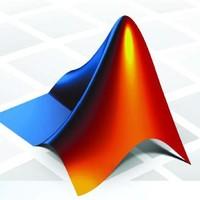We observe a disconnect between the developers and the end users of linear algebra libraries. On the one hand, the numerical linear algebra and the high-performance communities invest significant effort in the development and optimization of highly sophisticated numerical kernels and libraries, aiming at the maximum exploitation of both the properties of the input matrices, and the architectural features of the target computing platform. On the other hand, end users are progressively less likely to go through the error-prone and time consuming process of directly using said libraries by writing their code in C or Fortran; instead, languages and libraries such as Matlab, Julia, Eigen and Armadillo, which offer a higher level of abstraction, are becoming more and more popular. Users are given the opportunity to code matrix computations with a syntax that closely resembles the mathematical description; it is then a compiler or an interpreter that internally maps the input program to lower level kernels, as provided by libraries such as BLAS and LAPACK. Unfortunately, our experience suggests that in terms of performance, this translation is typically vastly suboptimal. In this paper, we first introduce the Linear Algebra Mapping Problem, and then investigate how effectively a benchmark of test problems is solved by popular high-level programming languages. Specifically, we consider Matlab, Octave, Julia, R, Armadillo (C++), Eigen (C++), and NumPy (Python); the benchmark is meant to test both standard compiler optimizations such as common subexpression elimination and loop-invariant code motion, as well as linear algebra specific optimizations such as optimal parenthesization of a matrix product and kernel selection for matrices with properties. The aim of this study is to give concrete guidelines for the development of languages and libraries that support linear algebra computations.
翻译:我们观察到线性代数图书馆的开发者和终端用户之间的脱节。一方面,数字线性代数和高性能社区在开发和优化高精密的数字内核库和图书馆方面投入了大量努力,目的是最大限度地利用输入矩阵的属性和目标计算平台的建筑特征。另一方面,终端用户通过在C或Fortran中写出代码直接使用所述图书馆的错误易变和耗时过程越来越少;另一方面,数字线性代数和高性能社区在开发和优化高精度数字内核内核内核内核内核内核内核内核内核内核内核内核内核内核内核内核内核内核内核,如BLAS和LAPACK等图书馆提供的内核内核内核内核内核内核内核内核内核内核内核内核内核内核内核内核内核内核内核内核内核内核内核内核内核内核内核内核内核内核内核内核内核内核内核内核内核内核内核内核内核内核内核内核内核内核内核内核内核内核内核内核内核内核内核内核内核内核内核内核内核内核内核内核内核内核内核内核内核内核内核内核内核内核内核内核内核内核内核内核内核内核内核内核内核内核内核内核内核内核内核内核内核内核内核内核内核内核内核内核内核内核内核内核内核内核内核内核内核内核内核内核内核内核内核内核内核内核内核内核内核内核内核内核内核内核内核内核内核内 内核内核内核内核内核内核内核内核内核内核内核内核内核内核内核内核内核内核内核内核内核内核内核内 内核内核内核内核内核内核内核内核内核内核内核内核内核内核内核内核内核内核内核内核内核内




